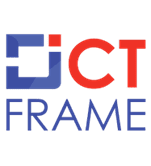Grande International Hospital Marks World Radiography Day, Emphasizes Radiology’s Dual Role in Healthcare
World Radiography Day Nepal
9th November 2025, Kathmandu
Grande International Hospital in Dhapasi, Kathmandu, celebrated the 130th World Radiography Day Nepal and International Day of Radiology on November 9, 2025.
World Radiography Day Nepal
The event was observed under the central theme of “Empowering Healthcare Through Imaging Excellence.” The celebration focused on highlighting the indispensable role of advanced imaging technology in modern medicine, particularly its expanding scope beyond simple diagnosis to complex treatment procedures.
Dr. Sharma Paudel, Senior Radiologist and Head of the Radiology Department at Grande Hospital, spoke at the event. He emphasized that with continuous technological development, radiology is steadily evolving into a dual-purpose discipline—a methodology for both detecting diseases and actively treating them.
The Evolving Scope of Radiology
Dr. Paudel noted the crucial role radiology plays in both patient diagnosis and treatment planning. He explained that the field now broadly encompasses two major branches of medical practice:
- Interventional Radiology: This specialization focuses on treating diseases without major surgery (bina chirfar upachar). It uses minimally invasive image-guided procedures to treat conditions like tumors, blockages, or bleeding, offering faster recovery times for patients.
- Diagnostic Radiology: This traditional branch focuses on utilizing imaging techniques to accurately detect and diagnose various diseases and conditions.
Dr. Paudel clarified that the field, initially named “Radiology” because it originated with radiation-based technologies like X-rays, has now significantly broadened its portfolio. He stressed that recent technological progress means that many sophisticated imaging techniques used today do not rely on radiation exposure at all.
Understanding Imaging Modalities
The field of radiology is now defined by a diverse set of technologies, categorized by whether they utilize radiation:
- Radiation-Based Imaging: These are procedures that use controlled doses of radiation to create internal images of the body. They include X-rays, CT Scans (Computed Tomography), Fluoroscopy, Nuclear Medicine, and Mammography. These are vital tools for examining bones, soft tissues, and organ function.
- Non-Radiation-Based Imaging: Technological advancements have introduced powerful tools that achieve high-resolution imaging without using ionizing radiation.
- These procedures include Ultrasound (Video X-ray) and MRI (Magnetic Resonance Imaging). These techniques are particularly valuable for soft-tissue evaluation and repeated imaging, such as during pregnancy or for monitoring specific conditions.
The celebration actively served as an educational platform to clarify the scope and safety of modern radiological practices. Dr. Paudel concluded that the progress in the field ensures that patients are receiving more precise, safer, and less invasive medical interventions, truly empowering healthcare across Nepal.
For more: World Radiography Day Nepal








